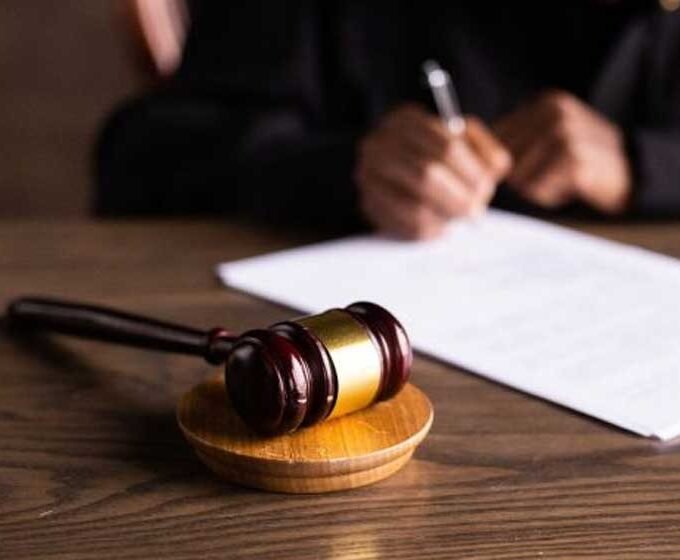San Mateo’s bustling commercial areas, including downtown shopping districts and popular establishments like Hillsdale Shopping Center, draw massive crowds, especially during the holiday season. While an outing with loved ones can be highly rejuvenating, sometimes pose slip and fall hazards catch victims off-guard. These accidents can lead to sprained joints, fractures, head injuries, or back and spinal injuries. The consequences are often emotionally and physically devastating. Nonetheless, there is a solution that victims can pursue.
Filing a personal injury case can help you seek justice and compensation for your losses when you’ve been injured due to someone else’s negligence. If you find yourself in a situation where medical bills are mounting due to an unforeseen injury, understanding the legal process and local considerations becomes crucial. Crucially, you must hire personal injury lawyers to guide you through the restitution process, given the complexity of the process. This comprehensive guide will walk you through everything you need to know about filing an injury case in San Mateo, ensuring you have the knowledge to protect your rights and make informed decisions.
Understanding Personal Injury Cases
Personal injury law is a legal area that encompasses cases where individuals suffer physical or emotional harm due to someone else’s negligence, intentional actions, or strict liability. Personal injury law mainly aims to compensate injured parties for their losses, including medical expenses, lost wages, pain and suffering, and other damages resulting from the injury.
In a personal injury case, the injured party, known as the plaintiff, must establish the following elements to hold the defendant liable:
- Duty of Care: The defendant must have had a legal obligation to act reasonably or exercise care to prevent harm to others.
- Breach of Duty: The plaintiff must demonstrate that the defendant failed to meet the required standard of care, either through negligence or intentional misconduct.
- Causation: The plaintiff must establish a direct link between the defendant’s breach of duty and the resulting injuries or damages.
- Damages: The plaintiff must prove that they have suffered actual harm, whether physical, emotional, or financial, as a result of the defendant’s actions or negligence.
Once these elements are established, the plaintiff can seek compensation by filing a personal injury lawsuit. The legal process typically involves investigation, evidence gathering, negotiation, and, if necessary, litigation.
The Legal Process
- Consultation and Case Evaluation: The injured party consults with a personal injury attorney who evaluates the case’s viability, assesses damages, and explains legal options.
- Investigation and Evidence Gathering: The attorney conducts a thorough investigation, gathering evidence such as accident reports, medical records, witness statements, expert opinions, and other relevant documentation to establish liability and damages.
- Demand and Negotiation: The attorney sends a demand letter to the opposing party or their insurance company, outlining the injuries, damages, and a proposed settlement. Negotiations may take place to reach a fair resolution.
- Filing a Lawsuit: If a settlement cannot be reached, the attorney files a lawsuit on behalf of the injured party, initiating the formal legal process. The defendant is served with a complaint, and the litigation phase begins.
- Discovery: Both parties exchange information, evidence, and documentation related to the case. Depositions may be conducted, where witnesses provide sworn testimony.
- Pre-Trial Motions and Settlement Conferences: The attorneys may file pre-trial motions to resolve specific legal issues. Settlement conferences may be held to encourage settlement discussions.
- Trial: If the case proceeds to trial, both parties present their arguments and evidence before a judge and jury. The jury determines liability and assesses damages, or the judge makes these decisions in a bench trial.
- Verdict and Appeal: The jury or judge delivers a verdict. If dissatisfied with the outcome, either party may appeal the decision, leading to a higher court reviewing the case.
- Enforcement of Judgment: If the injured party prevails, they can seek enforcement of the judgment to collect the awarded compensation from the defendant.
Specific Considerations in San Mateo
- Statute of Limitations: California has limitations that set deadlines for filing personal injury claims. In San Mateo, adhering to these time limits is important to protect your rights. For most personal injury cases, the statute of limitations is two years from the date of the injury. However, certain circumstances may alter these deadlines, so it’s essential to consult with a personal injury attorney to determine the specific time constraints relevant to your case.
- Comparative Fault: California follows a comparative fault system, which means that if you are found partially at fault for the accident or injury, your compensation may be reduced proportionately. It’s crucial to gather evidence to accurately establish the defendant’s fault and minimize any potential impact of shared liability on your claim.
- Damages: In personal injury cases, damages refer to the compensation sought for the losses suffered due to the injury. California allows various compensatory damages, including economic damages (such as medical expenses, lost wages, and property damage) and non-economic damages (such as pain and suffering, emotional distress, and loss of enjoyment of life). Understanding the types of damages available can help assess your claim’s potential value.
Maximizing Your Personal Injury Claim
Seek Immediate Medical Attention and Follow Treatment: This ensures that your injuries are properly documented and helps establish a clear link between the accident and your damages.
Document Your Damages: Keep meticulous records of all damages related to the accident. This includes medical bills, prescription receipts, therapy expenses, property damage repair costs, and other relevant financial losses. Maintain a detailed journal noting the impact of the injury on your daily life, pain levels, emotional distress, and limitations.
Gather Evidence: This may include accident reports, witness statements, photographs or videos of the accident scene, medical records, expert opinions, and other documentation that strengthens your case.
Don’t Settle Too Early: Avoid settling for an initial low offer from the insurance company. It’s important to assess the full extent of your damages, including long-term medical needs, potential future complications, and ongoing financial losses. Your attorney can help determine a fair and comprehensive settlement amount.
Be Prepared for Litigation: While most personal injury cases settle outside of court, being prepared for litigation is essential. Demonstrating your readiness to go to trial and having a strong case can encourage the opposing party to offer a more favorable settlement.
Conclusion
Filing a personal injury case can be complex and challenging, but with the knowledge and insights provided in this guide, you are better prepared to navigate the legal landscape. Understanding the types of personal injury cases, seeking legal assistance, and being aware of region-specific considerations.
















